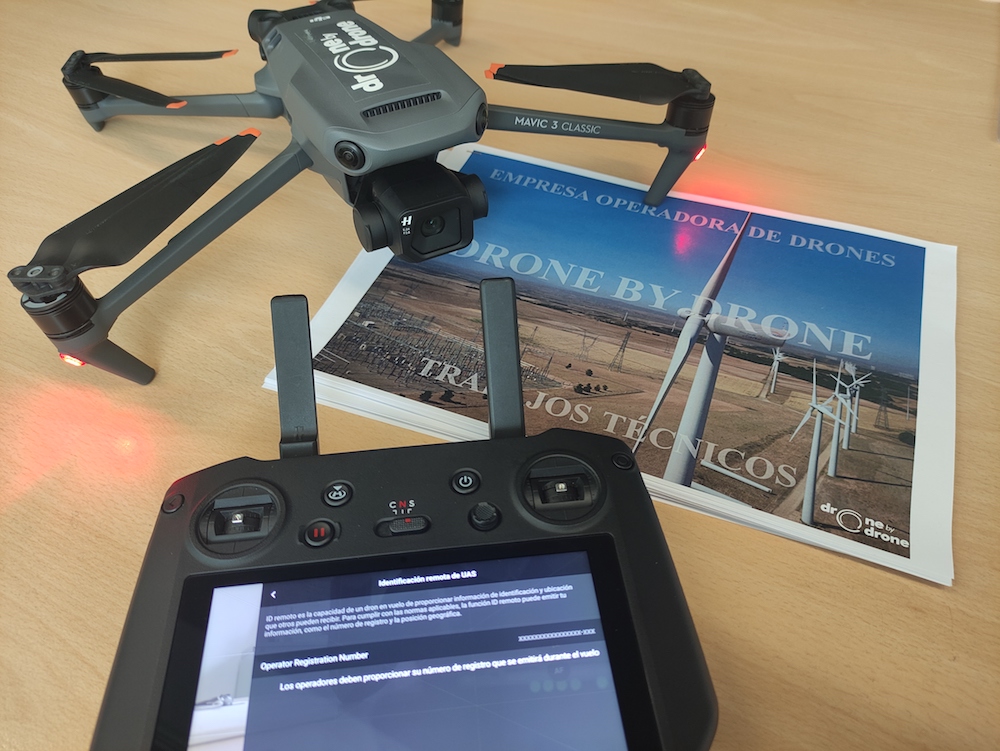According to EU Implementing Regulation 947/2019 and its subsequent amendments, remote identification will be mandatory in the European Union on UAS or drones, starting January 1, 2024. According to its article 23, the date of January 1, 2024 It is established as the entry into force of the entire regulation, including aspects related to remote ID.
All UAS of the specific category (including those that operate following the national standard scenarios, in the case of Spain the STS-ES), that operate in the EASA member states, as of January 1, 2024, must operate with a active and updated remote identification system. In addition to drones operating in a specific category, all drones with a class C1, C2, C3, C5 or C6 identification tag and that are already equipped with a remote identification system must do so, regardless of the operating category. .
The remote identification system is defined in article 3 of EU Delegated Regulation 945/2019, point 33.
'"Direct Remote Identification": a system that ensures the local transmission of information about an operating UAS, including the marking of the UAS, so that this information can be obtained without physical access to the UAS.'
According to Part 6 of the previous amended regulation, remote identification must be such that:
- guarantee, in real time throughout the duration of the flight, direct periodic transmission from the UA using an OPEN AND DOCUMENTED transmission protocol, so that it can be received directly by existing mobile devices within the transmission range, of at least the following data:
1.- the UAS operator registration number and verification code provided by the Member State of registration during the registration process, unless the consistency check defined in letter a is not passed).
2.- the unique serial number of the complement in accordance with point (2).
3.- the timestamp, the geographical position of the UA and its height above the surface or take-off point.
4.- the heading of the route measured clockwise from true north and the ground speed of the AU.
5.- the geographical position of the remote pilot or, if not available, the take-off point.
Therefore, from the indicated date, the drone operator is obliged to upload the UAS operator registration number received during the registration process into the remote identification system. In case the operator owns multiple drones, the same UAS operator registration number must be uploaded to all drones. EU states could identify UAS geographic zones where remote identification was not mandatory.
According to the indicated regulations, the open nature of the system by definition should allow all citizens to detect remote identification information through a specific application on their smartphones. However, for data protection, only law enforcement authorities will be able to query the database and associate the UAS operator's registration number with a name.
This last point is of special interest, given that the measure comes into force in less than a month, and that the application to consult said open data has not been published. It is clear that the authorities and security forces and bodies will be able to supervise these operations with their detection devices, and compare them with the registration number of the UAS operator indicated in the remote identification system, but this task is not the only one indicated by the rule. As the regulations indicate and as explained above, there must be an open database accessible to the public, which does not exist today, unless it is published in the coming days.
If your drone or UAS does not have a remote identification system, you could purchase a module and connect it. In the link of this news the manufacturers of these systems appear providing the EU Declaration of Conformity, although it must be taken into account that EASA has not verified the conformity of said components and the declaration of conformity is presented under the exclusive responsibility of the maker.
To enter the registration number of the UAS operator registered with each national authority, you must consult the registration carried out in said entity, not only being valid the number or identifier that appears in the registration certificate, but three secret numbers must be included. . If we click on the question mark below our operator number that appears in the AESA registration area, the three secret numbers will appear that we will need to add to our operator number so that the ID registration in our aircraft can be carried out correctly. This is indicated in GM1 to AMC1 of Article 14.
AESA on its website indicates that from December 31, 2020 to December 31, 2023, UAS operators may submit declarations of conformity with the national standard scenarios (STS-ES) published by AESA. These declarations will be valid and it will be possible to operate in accordance with what was declared, until December 31, 2025. But as of January 1, 2024, new operational declarations will not be accepted for the STS-ES.
As of January 1, 2024, UAS operators will be able to submit declarations of conformity with the European standard scenarios included in Implementing Regulation 947/2019, although in the case of STS-01, they do not yet exist on the market (a date of writing of this article) UAS with class C5 labeling, which are the only ones that can be flown in said standard defined scenario.
You can check the necessary specifications in the following link:
https://www.easa.europa.eu/en/domains/civil-drones-rpas/specific-category-civil-drones


